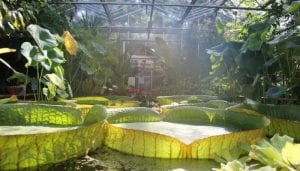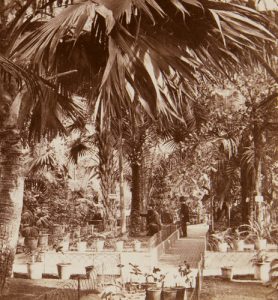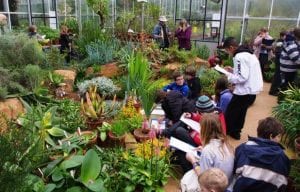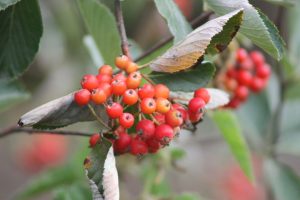By Andy Winfield

When I’m out and about outside work, and people ask what I do, and I tell them I work in a Botanic Garden, the most common next question is, what IS a Botanic Garden? I answer my stock response, a museum with living exhibits, but this reply just scratches the surface of what a Botanic Garden really is in the 21st century.
The more accurate answer to this question is that a Botanic Garden is many things, we are at our core a living museum, a curated collection of significant species; but surrounding this core are layers that create a life and vibrancy, each as important as each other.

The first Botanic Gardens were apothecaries, gardens with plants labelled for their medicinal usage. Then, as Europeans travelled the world ‘discovering’ places, they brought back many exotic plants and animals which were displayed in zoos and Botanic Gardens, changing the way the Gardens were used. Much like museums showing stolen hauls from distant cultures and communities, gardens were also a display of Empirical stomping; this is something we’re keen to address in Bristol and are working towards relaying colonial behavior through interpretation and labels. Today the Gardens have all evolved, the climate crisis dominates our thoughts, and here our mission statement sums up the role of Botanic Gardens now; to educate, communicate and conserve.
Plants have an important role in our lives but are somehow way down the public discourse. Commodities are fully formed and just a click away; just a quick look around the room you are in right now and you will see the influence of plants. The cotton of your clothes, the flax of your linen, the wood of your furniture, the tea leaves in your cup of tea, the chocolate in your KitKat and so on. All of the plant influences are unseen, and it’s up to a Botanic Garden to encourage people to think differently about how they interact with the world around them. If everyone leaves the Garden and has learnt something that they didn’t know before, then we’ve done part of our job.

Being part of a University means we’re surrounded by students; there are halls all around us here in Stoke Bishop full of thousands of young people. In my experience, young people today have a greater appreciation of nature than any other in my twenty years at the Garden. The Climate Crisis has brought the natural world into sharp focus, and for young people it’s the number one issue. This makes our presence an important place for them, a place to take a little time out and gather thoughts, senses are taken away for a moment and attention drawn to colours, birdsong and rustling leaves before plunging back into the business of being young. During exam time students will sit around the Garden revising under a tree or on the grass, a calming place to counter the stressful deadlines.
Schools visit the Garden for tours, photography and art. I enjoy the primary school visits with some excellent unabashed comments. My personal favourite was a girl who was looking at me as I explained how ancient Araucaria trees protected themselves from being eaten by dinosaurs; her arms were folded before she asked with some indignation, “so, you grown ups are trying to tell us that there used to be monsters the size of houses walking around, what do you take us for?”.
University departments ranging from Philosophy to Medicine use the Garden; the school of Life Sciences in the University uses the Garden for interesting and baffling projects. The ‘oil coating on a petal’ PhD, the ‘do birds have a seed feeder preference’ project, the ‘which materials break down faster in a compost heap’ research, and an ‘electricity from pond water’ experiment. Science takes many guises, and all are intriguing and important around the Garden. We also run Royal Horticultural Society courses which produce armies of new gardeners each year, heading out to their chosen horticultural life, making the world greener.

Conservation is at the heart of every Botanic Garden; here in Bristol we do what we can to help preserve Bristol’s native flora. This is through displays in the Garden and work with plant conservation groups in the city to maintain the populations of threatened plants in the Avon Gorge, Leigh Woods, and surrounding areas. Every Botanic Garden plays a role in protecting the flora from their surrounding habitats and communicating the existence of these threatened species is a large part of their protection.
The Garden is a community made up of visitors, students, and many volunteers in the Garden. The volunteers are all heroes of mine; their work invaluable with roles in gardening, guiding, welcoming visitors in the Lodge, admin, marketing, the list goes on. There are over 250 volunteers on the books, each have become part of our lives and us part of theirs; the conservation, education and communication are undertaken by this talented community.
For the last year we’ve been treading water, no volunteers, schools, visitors, but it’s beginning to get back to how it was before the pandemic. Our aim is for a visitor to leave the Garden with a greater understanding of the role plants play in their lives and ultimately, because of this, a greater respect for the planet. So what is a Botanic Garden? Its a museum, education centre, research site, community hub, place of sanctuary, conservation resource, and a place in our city where visitors can lose themselves for a moment.

